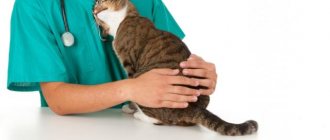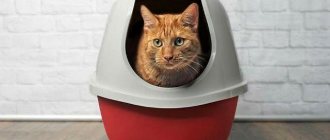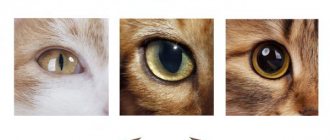The parasite of humans, cats and dogs, Giardia duodenalis (also known as Giardia lamblia), is distributed throughout the world, and giardiasis, caused by G. duodenalis, is the most common intestinal parasitic disease. The largest number of reported cases occur in children aged 1 to 9 years and adults aged 35 to 44 years. Most cases occur between early summer and early fall and are associated with recreational water sports (such as swimming) and outdoor activities. Humans are the main reservoir of Giardia. The parasite is also found in many animal species, although the role of zoonotic transmission is still unclear.
What is Giardia?
Giardia is a flagellated protozoan that comes in two forms: trophozoites and cysts. The infectious and environmentally resistant form is the cyst. Once ingested by a child, each cyst produces two trophozoites in the small intestine. The separated trophozoites pass through the intestine and form smooth, oval, thin-walled infectious cysts that are excreted in the feces. The duration of removal of a cyst usually has a finite period, but can last for months. Studies have shown that ingestion of 10 to 100 cysts of fecal origin is sufficient for infection. Giardia cysts become infectious immediately after excretion in feces and remain viable for at least 3 months in water at 4°C. Although freezing does not completely eliminate the infectivity of Giardia cysts, heating, drying, or immersing them in seawater renders them nonviable.
Features of animal examination
It is almost impossible to identify giardiasis in animals by the presence of clinical signs alone, since the disease occurs without the manifestation of any characteristic signs. Therefore, to clarify the diagnosis, veterinarians often prescribe scatological studies. This is the main method for diagnosing giardiasis in dogs and cats, although its effectiveness is only 50-60%.
Only Giardia cysts are found in the stool. The most sensitive method for identifying Giardia in animals is PCR (polymerase chain reaction), which makes it possible to detect the parasite in biomaterial by the presence of its DNA.
To identify Giardia, an examination is carried out, during which the necessary tests are taken
How does Giardia infection occur?
Giardia infection can occur directly through the fecal-oral route or indirectly through ingestion of contaminated water or food. Water contaminated with Giardia cysts appears to be the main reservoir and means of spread of the parasite. Most outbreaks of waterborne giardiasis have been associated with the consumption of untreated or improperly treated surface water. Transmission of giardiasis from person to person often occurs in child care institutions and in families where there are children with diarrhea. Human immune defense is dependent on B cells, with secretory immunoglobulin A playing a major role in immunity. Children with humoral immunodeficiencies, such as X-linked agammaglobulinemia and hypogammaglobulinemia, who develop giardiasis are predisposed to chronic disease.
G. duodenalis infection is more common in certain high-risk groups, including children, staff and visitors of child care facilities, patients and staff of institutions for people with developmental disabilities, people who drink contaminated drinking water or water from lakes, rivers or insufficiently treated swimming pools, travelers to endemic areas of the world, close contacts of people with Giardia, people taking antibiotics, and people in contact with domestic and wild animals (eg dogs, cats, cattle, deer and beavers).
Where does lamblia come from in cats?
The mechanisms by which Giardia causes disease in cats have not yet been sufficiently studied. Much of the information veterinarians rely on is based on studies of Giardia in humans. It is believed that cats become infected with Giardia by ingesting an immature organism. Once in the cat's intestines, this organism turns into a cyst. As a result, the cat excretes even more infected cysts in its stool. If other cats come into contact with the stool of an infected cat, or with Giardia in the cat's feces, they can also become infected. A cat can also ingest giardia from contaminated drinking water, puddles or ponds.
What are the symptoms and signs of giardiasis?
The incubation period of the disease usually lasts from 1 to 2 weeks, averaging 7 days. Infection with G. duodenalis can cause a wide range of clinical manifestations. Children usually present with short-term, acute, watery diarrhea with or without low-grade fever, nausea, anorexia, and abdominal pain. In other cases, the infection follows a longer, intermittent course, characterized by foul-smelling stools associated with flatulence, bloating, and anorexia. Malabsorption combined with anorexia can lead to significant weight loss, stunted growth, and malnutrition in children. The stool may initially be large and watery, but later become greasy and foul-smelling. There is no blood, mucus, or leukocytes in the stool. Varying degrees of malabsorption may occur, and abnormal bowel movements may alternate with periods of constipation and normal bowel movements. Post-infectious lactose intolerance can occur in 20% - 40% of patients. This syndrome may take several weeks to resolve and may contribute to malnutrition in children. Malnutrition and repeated episodes of Giardia infection in the early years of life are associated with cognitive decline in late childhood. In addition, a proportion of children will develop chronic gastrointestinal symptoms such as post-infectious irritable bowel syndrome (PI-IBS).
Asymptomatic giardiasis is also common. Extraintestinal invasion can occur when trophozoites migrate into the bile or pancreatic ducts. Extraintestinal manifestations were previously considered uncommon, but recent studies suggest that one third of patients will exhibit long-term extraintestinal symptoms, including ocular, muscular, and metabolic complications. The subsequent development of reactive arthritis may also be associated with giardiasis.
Dog care
Diet
There is no need for any special diet. However, it makes sense to switch your dog to a higher protein diet.
In cases where the gastrointestinal tract has been damaged as a result of the disease, it is worth temporarily putting the dog on a Gastric intestinal therapeutic diet.
Hygiene
During the treatment period, it is recommended to bathe the dog more often. Firstly, because the consequence of diarrhea can be contamination of the fur. And secondly, invasive (infectious) cysts are released in feces. And to avoid re-infection, wash your dog more often.
Diagnosis of giardiasis
A definitive diagnosis of Giardia infection is made by detecting trophozoites or Giardia cysts in stool samples, intestinal contents, or small intestinal tissue by microscopic examination using staining techniques such as trichrome. Also used are direct fluorescent antibody tests (DFA), detection of soluble stool antigens using enzyme-linked immunosorbent assay (EIA), and the use of molecular methods, including polymerase chain reaction (PCR). EIA or multiplex PCR is the main currently recommended diagnostic methodology. There are currently commercially available multiplex PCR panels for the detection of gastrointestinal pathogens, including Giardia. These tests are highly sensitive (92% to 100%) and specific (96.9% to 100%) and can simultaneously detect multiple GI pathogens.
Identification of both trophozoites and cysts can be made on direct smears of concentrated stool samples. Correctly performed direct examination of stool allows a diagnosis of giardiasis to be made in 70% of patients during a single examination and in 85% during a repeat examination. Identification of Giardia can be difficult due to the periodic release of cysts. Stool samples should be examined within 1 hour of collection. Trophozoites are more likely to be present in unformed stool due to rapid passage through the intestine. Cysts are stable outside the gastrointestinal tract.
If giardiasis is suspected and stool tests are negative, aspiration, biopsy, or both should be performed during endoscopy of the duodenum or upper jejunum. In a fresh specimen, trophozoites can usually be visualized on a direct wet mount. Histological evaluation of duodenal biopsy specimens has low sensitivity for detecting infection, however this diagnostic approach may be necessary in patients with clinical characteristics of Giardia infection but negative stool and duodenal fluid specimens. The commercially available Entero-Test is an alternative method for direct collection of duodenal fluid.
Routes of infection
Giardia belongs to the parasites of the flagellate family. It has 4 pairs of flagella, thanks to which it can move. They also have a suction cup, which provides a good fit to the mucous membrane of the gastrointestinal tract. The source of Giardia infection is humans. However, identical parasites have also been found in the digestive tracts of animals including dogs, cats and beavers, so they may also be a source of infection. Giardia cysts are responsible for the spread of the disease. They are most contagious during and immediately after elimination from the body. Transmission occurs through ingestion.
Most often through:
- drinking contaminated water, swimming in a contaminated lake; eating unwashed fruits or vegetables;
- transfer of Giardia through dirty hands into the mouth;
- using public toilets without proper hygiene.
Giardia reproduces very quickly and, most importantly, can survive for a long time, especially in water. In a lake with a temperature of 18 °C, Giardia can survive up to 3 months.
Treatment of the disease
Effective antiparasitic therapy is the main initial method of treating Giardia in children and adults. Patients should receive supportive care with hydration, correction of electrolyte abnormalities, and nutritional supplements. Drugs that reduce intestinal motility (antidiarrheals) should be used with caution in young children. Patients with chronic diarrhea should be monitored for malabsorption leading to wasting.
The therapeutic efficacy of metronidazole against Giardia has led to the development of other nitroimidazole derivatives such as tinidazole and secnidazole. The advantage of these drugs is that they have a longer half-life than metronidazole, making them suitable for single daily dose treatment. A single dose of 2 g (or an equivalent pediatric dose of 50 mg/kg in a single dose) of tinidazole has demonstrated cure rates of 80% to 100%. Cure rates for patients with giardiasis have been shown to be consistently higher with the use of tinidazole than with other antiparasitic drugs such as metronidazole, nitazoxanide, mebendazole, albendazole, and chloroquine. Tinidazole is approved for use in children aged 3 years and older. The drug is available in tablets that can be crushed into a flavored syrup for patients who are unable to swallow tablets.
Metronidazole was recognized as a therapeutic agent against giardiasis in 1962. Since then, clinicians have used metronidazole and other nitroimidazoles as the mainstay of therapy for giardiasis. Metronidazole is the drug most commonly used to treat giardiasis worldwide. Children have been included in many clinical trials of metronidazole with results similar to those in adults (average effectiveness of 94%) with 5-day and 10-day course regimens. Metronidazole is not available in standard liquid form, but a suspension can be prepared by thoroughly crushing metronidazole tablets using glycerin as a lubricant and suspending the mixture in a flavored syrup.
Side effects of tinidazole are not as common as those of metronidazole. The most common side effects of metronidazole treatment include headache, dizziness, nausea, and a metallic taste in the mouth. Nausea occurs in 5–15% of patients receiving standard multi-day courses. In addition, metronidazole has been associated with reactive pancreatitis, central nervous system toxicity at high doses, and transient reversible neutropenia.
Preventive measures
Since Giardia can survive in the environment for a long time, the main preventive method against them is maintaining cleanliness in the house and normal hygiene rules, which consist of the following actions:
- washing hands after cleaning the tray;
- timely disinfection of all surfaces in the house;
- high-quality cleaning of cat habitats;
- treating the cat's tray and dishes with boiling water.
Giardia is very susceptible to a dry external environment, so excessive humidity should not be allowed in the house. In order to avoid infecting your pet with giardiasis, it is necessary to minimize his visits to places where animals frequently gather.
Giardia, which infects humans and cats, belongs to different species, but scientists do not exclude the possibility of humans being affected by Giardia in animals. For this reason, owners of cats with giardiasis should be even more careful about following hygiene rules. Patients with cancer and immunodeficiency need to be protected from the source of infection.
Preventing relapses of giardiasis
There are no known pharmacological agents that effectively prevent relapse of giardiasis. Reinfection often occurs in endemic areas or in situations where hygiene levels are poor or contaminated water (such as private wells) is not properly treated. Re-infection can be prevented by consistent hand hygiene, especially after bowel movements and handling soiled diapers. You should also practice hand hygiene before preparing and eating food. To reduce the risk of disease transmission, children with diarrhea should be removed from childcare settings until the diarrhea stops. Children with giardiasis should not go to recreational water facilities for 2 weeks after the symptoms disappear.
Giardiasis in cats: treatment regimen
No drug has been officially approved in the United States to treat giardiasis in cats. However, the standard treatment involves taking metronidazole, an antibiotic that the cat usually has to take for five to seven days. Your veterinarian may suggest another similar medication, such as albendazole or fenbendazole.
Recommendations for the prevention of giardiasis
Because giardia is most often spread through contaminated water and food or contact with an infected person or animal, you should avoid using untreated water sources and wash your hands with soap and water after handling potentially contaminated fecal material or contact with an infected person or animal. Alcohol-based gels are ineffective against Giardia cysts and should not be used as a substitute for hand washing when there is a risk of Giardia infection.
In the hospital, standard precautions include wearing gloves and washing hands after removing gloves.
Before traveling to areas where water may be contaminated or the safety of drinking water is questionable, travelers, tourists, and vacationers should be informed of methods to make the water safe to drink.
These measures include using bottled water, disinfecting the water by heating it to a boil for 1 minute, or using a filter that has been tested and certified to NSF Standard 53 or Standard 58 to reduce cysts and oocysts. Outbreaks of waterborne giardiasis can be prevented by a combination of proper filtration of water sources, chlorination, and maintenance of water distribution systems. Travelers should also be advised of the possibility of transmission of giardiasis through the use of contaminated water for recreational purposes (eg, lakes, rivers, inadequately treated swimming pools). Call a doctor at home Make an appointment with a doctor or call +7 (812) 331-17-74
How to get rid of lamblia
If a cat is diagnosed with giardiasis, it is necessary to disinfect the house to prevent re-infection of the animal or yourself. For cleaning, you can use a diluted solution of chlorine bleach in a ratio of 1:16. You can also steam or dry clean your cat's sleeping area with a disinfectant containing quaternary ammonium. Giardia cysts easily die in dry conditions, so it is best to keep the area as dry as possible for several days.
Giardia can also be found in cat fur. The best way to remove organisms from your pet's fur is by bathing with pet shampoo and rinsing thoroughly. After this, you need to bathe the cat again with a quaternary ammonium-based disinfectant. The product can remain on the fur for no more than three to five minutes, since prolonged contact with this chemical can cause irritation to the skin and mucous membranes of the cat.
After bathing, rinse thoroughly, paying close attention to the area around the anus. Since in most cases bathing a cat is not an easy task, you can entrust it to a veterinarian. If the animal is too nervous, the specialist may prescribe mild sedation.
Feline toxoplasmosis
Cats can become infected with Toxoplasma gondii by eating contaminated prey such as mice or contaminated meat. This parasite is capable of infecting all mammals, including humans. Therefore, cats are a source of toxoplasmosis for humans. The incidence of toxoplasmosis in cats in the Moscow region is at least 17%1. As a precaution, pregnant women should avoid contact with cat feces, should wear gloves when gardening, should not eat raw or undercooked meat, and should be sure to wash vegetables that may have been grown in contaminated soil.
Briefly about the main thing
- Giardiasis, also known as Giardiasis, is a parasitic disease that is contagious to both animals and humans.
- The causative agent of giardiasis is the simplest unicellular microorganism - Giardia.
- Method of infection: Giardia lives in the external environment in the form of cysts. Cysts with water, soil or feces of other animals enter the dog’s body. They penetrate the digestive tract into the upper part of the small intestine, where the cyst is destroyed and trophozoites are released. Trophozoites adhere to the intestinal wall, feed and reproduce.
- The main symptoms of the disease are chronic diarrhea and vomiting. Associated symptoms include loss of appetite, thinness, and dehydration.
- Treatment should be prescribed by a veterinarian after an accurate diagnosis. Treatment consists of a course of drugs from three to five days. It is very important not to interrupt the course and follow all recommendations.
- It is very important to periodically treat your dog for parasites.











